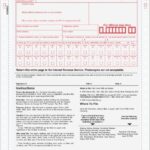
Accessing the rules list in QuickBooks Online provides users with an overview of the existing automated instructions for transaction categorization and organization, facilitating effective rule management. In QuickBooks Online, rules are a powerful tool for automating and streamlining your accounting processes. There may come a time when you need to undo a rule due to changes in your business needs or errors in the rule setup. In this article, we will explore the process inventory holding costs: how to calculate + formula of undoing a rule in QuickBooks Online, step by step, to help you efficiently manage your financial transactions. This process allows for the optimization of rule management, ensuring that only pertinent rules are in place to categorize transactions accurately. By accessing the ‘Banking’ menu, users can select ‘Banking Rules’ and then spot the rule that needs to be deleted.
Editing rules in QuickBooks Online involves modifying the automated instructions that govern transaction categorization and management, allowing users to refine and customize their financial data organization. Accessing the rules list in QuickBooks personal financial statement template Online provides users with a comprehensive overview of the existing automated instructions for transaction categorization and organization, enabling efficient rule management. This process involves accessing the ‘Banking’ tab within QuickBooks Online, where users can navigate to ‘Rules’ to view and modify existing automated instructions.

How To Delete Rules In QuickBooks Online?
- By meticulously reviewing the criteria, users can streamline their accounting processes, maintain accuracy in financial records, and avoid potential errors that may arise from an oversight.
- To modify a specific rule, users can click on the rule and then select ‘Edit.’ This will allow them to customize the rule criteria, such as payee, amount, category, and more.
- From double-checking rule criteria before saving to utilizing the “Test” feature before applying a rule, these practical recommendations will help you maintain the integrity of your accounting processes.
- This functionality is extremely useful for businesses wanting to streamline their accounting processes and ensure accuracy in recording financial transactions.
It’s imperative to weigh the potential risks and benefits, ensuring that the company upholds the highest standards of financial governance and accountability within the QuickBooks Online platform. This is crucial for maintaining the integrity of financial data and ensuring that the organization’s financial statements are in line with industry regulations. By removing the edited rule, it prevents any misrepresentation of financial information and supports transparency in reporting. This step not only streamlines the accounting process but also fosters trust and confidence among stakeholders. This automation saves time and minimizes errors in transaction management, allowing users to efficiently maintain accurate financial records within the QuickBooks Online platform.
How to Create Bank Rules (to Save Time!) in QuickBooks Online
This automation ultimately helps save time and reduces the risk of errors in transaction categorization and data organization within the QuickBooks Online platform. This process is crucial for optimizing rule management, as it allows users to have greater control over how transactions are categorized. By deleting unnecessary rules, users can streamline the categorization process and ensure that their financial records accurately reflect their business activities.
Understanding the significance of the rule list in QuickBooks Online is crucial for maintaining organized and transparent financial records, aligning with best practices for efficient financial management within the software. When choosing a rule to change in QuickBooks Online, users should first navigate to the banking or transactions tab and locate the ‘Rules’ feature. From there, they can review the existing rules and criteria set for categorizing transactions. Adapting transaction management involves customizing the criteria for how transactions are classified, providing a more tailored approach to organizing and analyzing financial data within the QuickBooks Online platform. Customizing transaction management through rule editing allows for greater control over how income and expenses are classified, saving time and reducing the margin of error in financial reporting. The final step in undoing a rule in QuickBooks Online involves removing the edited rule, ensuring that the changes are accurately reflected in financial reporting and compliance with accounting standards and regulations.
This not only saves time but also reduces the risk of errors in transaction categorization, providing a more reliable financial overview. This list is an essential tool for managing financial transactions effectively, as it enables users to identify the specific rules that are impacting their transactions. By accessing the rule list, users can pinpoint the rules that need modification or removal, ensuring accurate financial reporting and streamlined transaction categorization. By navigating to the ‘Banking’ menu and selecting ‘Banking Rules,’ users can efficiently manage their automated transaction instructions. Within the rules list, users have the option to edit, delete, or create new rules to ensure accurate and streamlined transaction processing.
Accessing the Rules List
By the end of this article, you will have a thorough understanding of how to navigate the process of undoing a rule in QuickBooks Online, empowering you to optimize your financial management with confidence and efficiency. We recommend you start by creating easy rules for recurring transactions (think XYPN monthly dues), then increase the difficulty as you become more comfortable understanding the criteria to make a good rule. You can create targeted rules so specific transactions are automatically accepted into your books from the Bank transactions (Take me there) page. QuickBooks automatically applies your rules to transactions in the For review tab. By taking these factors into account, the task of identifying the rule to undo debt to equity debt equity ratio formula calculator and example becomes an essential aspect of maintaining the accuracy and relevance of the rule list. Once saved, the rule functions automatically to manage future transactions seamlessly and accurately.
To begin the process of undoing a rule in QuickBooks Online, you need to access the rule list, which contains all the predefined criteria and instructions for transaction management and categorization within the software. By fine-tuning the rule management, users can ensure that the platform accurately categorizes transactions, providing a clear and organized overview of the company’s financial activities. Effective rule management is essential for maintaining accurate financial records and making informed business decisions within QuickBooks Online. By optimizing rule management, users can customize their automated guidelines to better suit their specific financial needs, further enhancing the efficiency of transaction categorization and management within QuickBooks Online.
After choosing the rule, users can click on the ‘Delete’ option and confirm the deletion. This action will remove the rule from the system, streamlining the rule management process and reducing clutter in the transaction categorization workflow. This process optimizes rule management and ensures that the system is not cluttered with unnecessary or outdated rules. To select a rule for deletion, users should first review their existing rules to identify those that are no longer required or are creating conflicts in transaction categorization. They can then navigate to the Rules section in QuickBooks Online, locate the specific rule, and proceed with the deletion process. Changing rules in QuickBooks Online entails making adjustments to the automated instructions that dictate transaction categorization and management, allowing users to adapt their financial data organization.

Vélemény, hozzászólás?